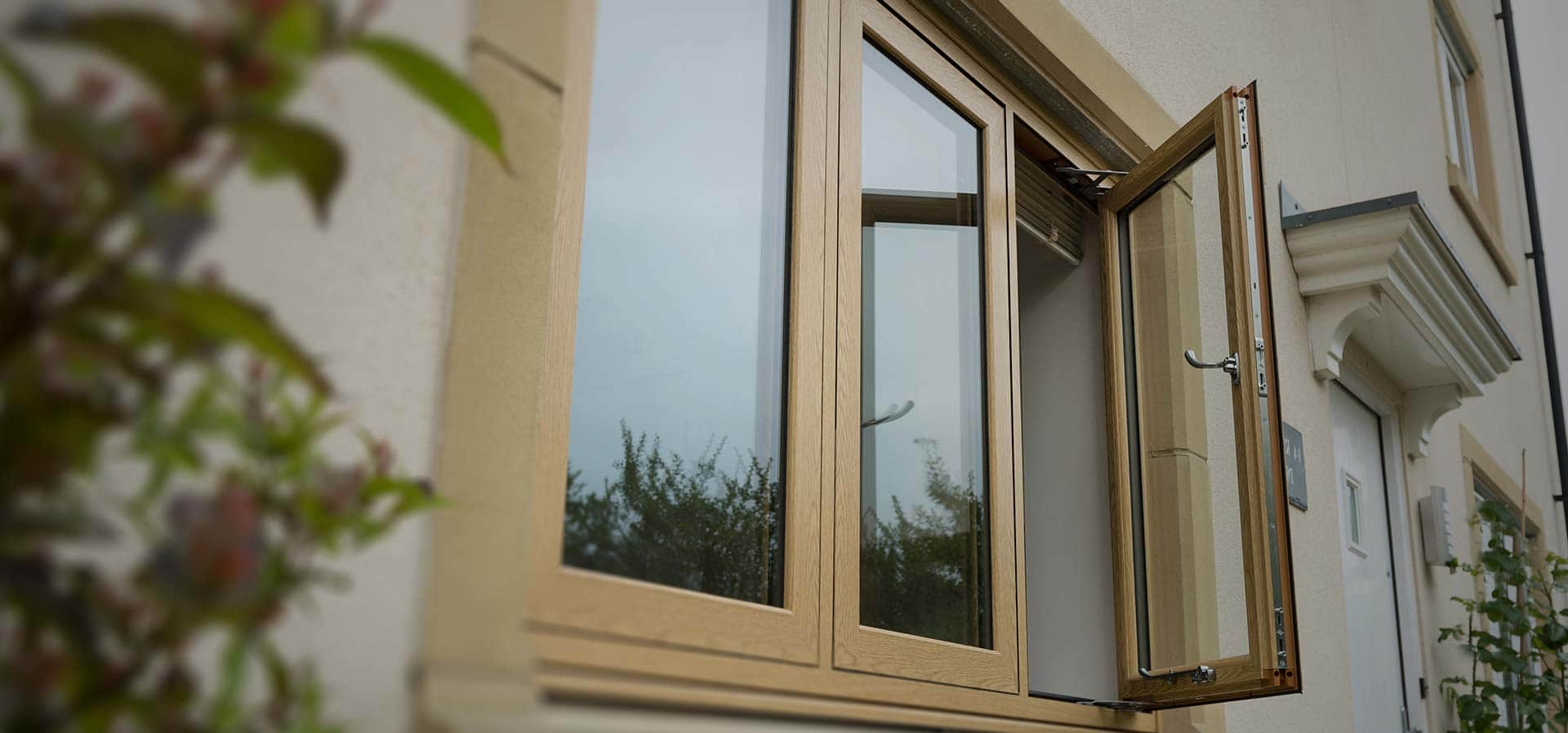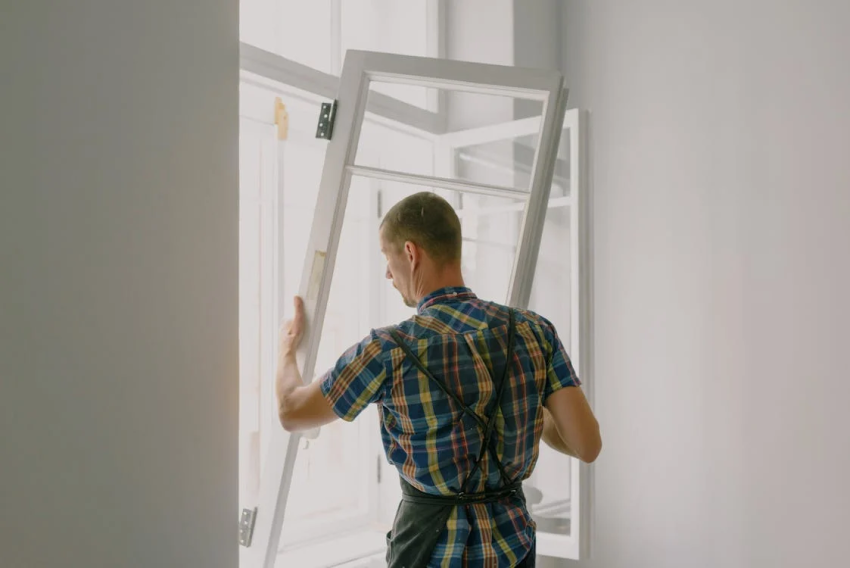Even the best, most energy-efficient window will underperform if installed poorly. Gaps, leaks, and uneven frames can erase the efficiency you paid for and even void your warranty. That’s why choosing the right installer is just as important as selecting the right window.
This guide explores what defines a qualified installer, how to evaluate their credentials, and the workmanship details that separate a professional installation from a problematic one.
What Makes a Qualified Installer
A proper window installer isn’t just someone with a ladder and caulking gun. A qualified professional brings training, insurance, and verified experience to every job. Look for these essentials before signing any contract:
- Valid insurance: Every reputable installer should carry both general liability insurance (to protect your property) and workers’ compensation (to cover employee injuries).
- Manufacturer certifications: Many top window brands certify installers who complete their training programs. This ensures they know how to install that brand’s products correctly.
- Proven track record: Experienced installers should be able to show a portfolio of past projects or provide references from recent clients.
Together, these credentials demonstrate professionalism, accountability, and familiarity with modern installation standards. As University of Massachusetts Building and Construction Technology notes, correct window installation and air-sealing practices are among the most cost-effective ways to preserve energy performance in residential buildings.
Why Installer Choice Matters

Hiring a certified, experienced installer directly affects performance, safety, and long-term value.
- Warranty protection: Most window warranties require that installation follows manufacturer specifications. A certified installer ensures compliance.
- Energy efficiency: Even a high-end window loses its benefits if not properly sealed. Professionals use low-expansion foam, precision shimming, and high-grade sealants to prevent air leakage. According to Natural Resources Canada, windows and doors must meet federal energy-performance certification standards to achieve their rated efficiency, which proper installation helps preserve.
- Moisture control: Correct flashing and water barrier installation prevent hidden leaks that can lead to rot and structural damage.
- Smooth operation: A properly leveled and plumbed window will open, close, and lock effortlessly for years.
A good installation not only makes your windows perform better but also protects your investment from unnecessary repairs.
Comparing Installer Options
Not all installers operate under the same standards. Here’s how different types of professionals typically
| Parameter | Manufacturer-Certified Installer | General Contractor | Independent Handyman |
| Product Expertise | Very high – trained on specific window systems | Moderate – broad project knowledge | Varies – may lack product-specific training |
| Accountability | Strong – backed by manufacturer | Good – manages full project scope | Limited – often no formal warranty |
| Cost | High | Medium to high | Low |
| Insurance | Always included | Typically included | Must be verified |
Manufacturer-certified installers usually cost more upfront but provide greater assurance of quality and warranty compliance.
Steps to Finding the Right Professional
1. Verify certifications and insurance.
Always ask for proof of insurance and confirm it with the provider. For manufacturer certifications, check directly with the brand’s website or customer service.
2. Check references and past work.

Ask for the last few installations the company completed in your area. Contact those homeowners about punctuality, professionalism, and cleanup quality. If possible, visit one of the sites to see caulking lines and trim work firsthand.
3. Review workmanship details.
A detailed written quote reveals a lot about an installer’s professionalism. It should specify:
- Window make and model
- Installation method (insert or full-frame)
- Insulation type (low-expansion foam preferred)
- Flashing and sealing materials
- Interior trim finish
- Cleanup and debris removal plan
A vague or single-line quote can be a red flag.
Common Mistakes to Avoid
- Choosing by price alone. Low bids often come with cut corners, unverified insurance, or unskilled labor.
- Skipping a written contract. Always get the full scope, payment schedule, and timeline in writing.
- Ignoring building codes. Professional installers know local code requirements, including egress window sizing and safety standards. The World Health Organization also emphasizes that poor window installation and moisture intrusion can contribute to mold and indoor-air-quality problems, which affect occupant health.
- Paying in full upfront. A deposit for materials is standard, but final payment should follow inspection and approval of the completed work.
Avoiding these mistakes helps ensure accountability and peace of mind throughout the project.
The Overlap Between Installer and Manufacturer Warranties
One of the most common homeowner frustrations arises when a problem appears months or years after installation. The installer may blame the product, while the manufacturer blames the installation.
The simplest way to avoid this “blame game” is to hire a manufacturer-certified installer. In that case, both the product and its installation fall under the same umbrella, creating a single point of responsibility for any future warranty claims. It also signals that the installer meets the manufacturer’s standards for training and technique.
Industry Standards and Best Practices
Professional window installation follows well-established industry guidelines. National standards organizations outline the proper methods for flashing, insulation, shimming, and sealing to ensure performance matches the product’s tested ratings.
In Canada, for instance, the Canadian Standards Association (CSA) sets detailed requirements for window installation under CSA A440.4. The Standards Council of Canada confirms that this national standard defines how flashing, sealing, and frame integration must be performed to maintain tested air- and water-tightness.
Similar standards exist internationally, defining how joints should be sealed and how water infiltration should be managed. When interviewing installers, ask if their work adheres to these or equivalent standards.
Frequently Asked Questions (FAQ)
1. What should I consider when I choose the right installer?
Look for three key items:
1) Proof of current liability insurance and workers’ compensation.
2) Manufacturer certifications.
3) A detailed, written contract that specifies all workmanship details.
2. How do I choose the best installer?
The “best” installer has a proven, local track record. Get at least three detailed quotes, call their recent references, and choose the one who gives you the most confidence in their professionalism and workmanship, not just the one with the lowest price.
3. What are the advantages and disadvantages of a certified installer?
- Advantages: High-quality installation, protection of your product warranty, and full accountability.
- Disadvantages: They are almost always more expensive than a general handyman because you are paying for their expertise, insurance, and training.
Conclusion

A window is only as good as its installation. The right installer transforms a high-performance product into a lasting improvement for your home’s comfort and efficiency.
By verifying credentials, checking references, and reviewing workmanship details carefully, you can select an installer who delivers the quality, accountability, and craftsmanship your project deserves. In the long run, that diligence ensures your windows perform exactly as promised for many years to come.For more information on the roles and responsibilities of professional trades, you can visit authoritative sources such as Wikipedia’s page on Building Trades.


